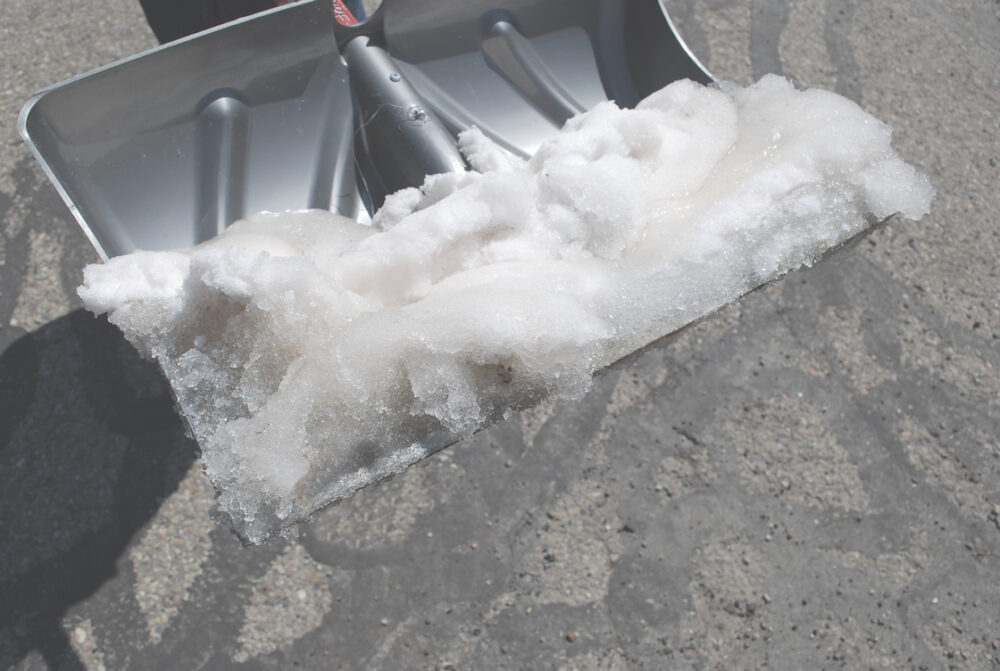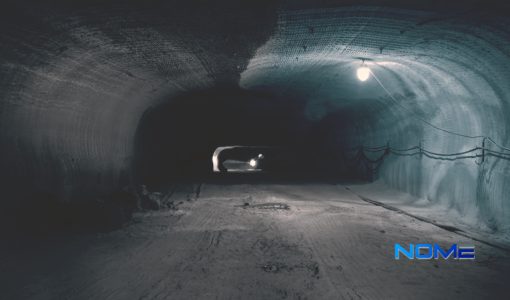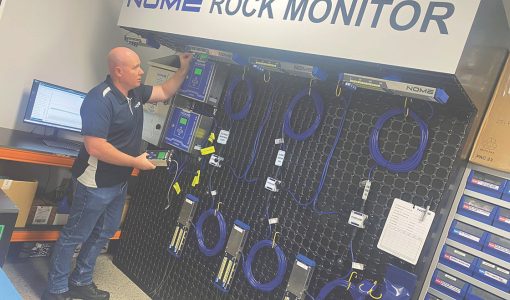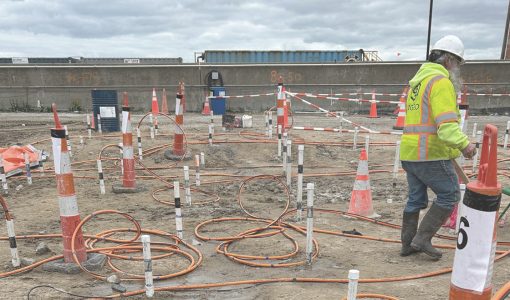Waste water and liquid management is not just a workplace safety issue, it is also about production efficiency and cost management. Water mitigation and control have been a compulsory part of the design of mines for decades. Management plans generally address excessive accumulation, flooding, wastewater runoff, and groundwater seepage which can lead to serious structural issues, cut off worker escape routes, and lead to fatal drowning accidents. However, high volumes of water while mucking out new shafts and tunnels can slow production and introduce more safety issues.
Essential to advancement and production, mucking creates a heavy combination of solids and liquids, in varying ratios. Solids are easily sequestered into transports with mucking machines. Shafts, on the other hand, can offer a greater challenge. Depending on the amount of water present, the consistency can make clam operation and bucket removal slow and costly. Dewatering pumps work but can clog quickly and may not have the power to adequately pull the weight of the sludge.
An effective product used by mine and tunnel operators is StrataSORB, an absorbent polymer that captures liquid, turning it into a lightweight solid that can then be easily handled and cleared. By transforming the liquid into a solid, it is easier and safer to transport, store, and dispose of according to solid waste disposal rules.
“We currently have a customer using StrataSORB in tunneling to manage the nature of the muck that comes out of their tunnel and is temporarily stored in a muck bin,” said Mike Rispin, Vice President of Strata Tunneling. “By using StrataSORB, they’re able to modify the liquid content to make the muck easier to manage and later dispose of.”
The Hazards of Muck in Mines and Tunnels
Mucking can be dangerous and rockfall is common, so remote muckers safely take workers out of the process. However, spraying may be required to reduce dust, creating some pooling and sticky muck. This could be exacerbated by leaching groundwater which could make operations more difficult and create a hazard for foot traffic. Spreading StrataSORB can help manage the area around the working face, making machinery more efficient and walkways safer.
Mucking a shaft may require one or more people to be present down the shaft to attach the bucket chain to the lift hook. Excessive water down the shaft can make clams less effective, hamper movement, or create slick conditions that can suddenly put the worker in harm’s way. StrataSORB at the bottom of the shaft can help manage pool buildup and deep muck that can trap the worker(s).
Working with solids is always preferable and easier to transport. Adding StrataSORB to absorb leaching water and standing water during mucking can prevent some of the safety and production issues associated with muck.
The Hazards of Standing Water in Mines and Tunnels
As water remains stagnate, oxygen dissipates causing the water to foul and begin a process that could be hazardous to all workers that even pass by the area. Deoxygenated standing water absorbs surrounding hazardous gasses. Sediment settles at the bottom, creating the idea environment for biological propagation and biofilms to form in the sediment and on the surface. Although long-term exposure certainly has detrimental health effects, short-term exposure can result in health issues as well.
Acid Mine Drainage (AMD) – This is runoff from mining and tunneling activities that cause large-scale earth disturbances within rock formations that contain an abundance of sulfide minerals. Studies of AMD in mines, tunnels, tailings ponds, and surrounding waterways have revealed highly toxic metals, such as copper or iron. [1] Bare skin physical contact with AMD by workers can cause burning or rashes. Fumes can cause skin irritation, kidney damage, and neurological diseases. [2]
Biofilm – Dominated by acidophilic (organisms that thrive under highly acidic conditions) bacteria, sediments form a hydrated toxic biofilm environment. Bacteria in biofilms produce acidic leachate from tailings, then leach out metals, potentially enhancing the dispersion of metals and making the area around pooling and runoff more hazardous for workers. [3]
Legionella in Mines
Legionella is a microbe that thrives in dormant water in warmer conditions. Significant disruption or evaporation of the water in which it is housed will expose it to ambient air currents or release aerosolized contaminated droplets. When breathed in, it causes a serious respiratory illness that results in pneumonia in workers.
It is not an exceptionally robust microbe, so it hides in biofilm, seeking refuge inside amebae without affecting the organism’s natural movement or propagation. These traits make it hard to detect. If left unaddressed, an outbreak may lead to downtime and workplace safety violations. These could also result in fines and the shutting down of sections of the mine for expensive environmental remediation. To mitigate liability and disruption, mine operators use an environmentally safe polymer.
Mine and Tunnel Water Management
StrataSORB has a white granular powder appearance that, when spread or piled, offers fast water absorption. It retains water at a ratio of 300 to 1, meaning 1lb of powder absorbs approximately 36 gallons (300lbs) of clean water. For perspective, 10lbs of StrataSORB should absorb enough water to fill the average 4-person hot tub.
Upon contact, it transforms the liquid into a gel that is 100 percent non-toxic and environmentally safe. Any toxic substances or properties contained in the liquid are retained within the gel, allowing the solid to be manually or mechanically removed by shovel or loader.
If not saturated with toxic or flammable substances, it is safe for incineration with no PCB or dioxin formation. StrataSORB has a waste volume increase of less than 1% percent, making the disposal volume manageable since it is nearly equal to the volume of the absorbed liquid. Available in sacks as large as 50 lbs (22 kg), it has no expiration date if stored in a dry location. This means that tunnel construction and mine operators can have a substantial supply on hand in case of emergency.
Safely Mitigating Liquids in Mines and Tunnels
Regulations regarding underground standing water and wastewater runoff vary greatly around the world, but safety is the right thing to do. Operators that maintain a safer workplace and actively lower their environmental impact enjoy positive community relations and less government scrutiny.
StrataSORB helps sustain optimum environmental conditions. Operators should ensure that they have enough StrataSORB in storage to respond to any liquid accumulation. Workers should be familiar with its use and employ it during maintenance activities involving spraying or cleaning that can result in hazardous wastewater runoff.



